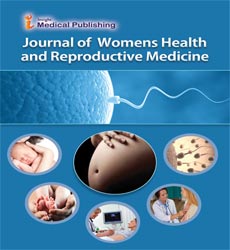Lysosome-Related Qualities in Bosom Malignant Growth
Emily Stone*
Women's Health Research Centre, New York, USA
- *Corresponding Author:
- Emily Stone
Women's Health Research Centre, New York,
USA,
E -mail: Emily@gmail.com
Received date: February 12, 2024, Manuscript No. IPWHRM-24-18736; Editor assigned date: February 15, 2024, PreQC No. IPWHRM-24-18736 (PQ); Reviewed date: February 29, 2024, QC No. IPWHRM-24-18736; Revised date: March 07, 2024, Manuscript No. IPWHRM-24-18736 (R); Published date: March 14, 2024, DOI: 10.36648/ipwhrm.8.1.76
Citation: Stone E (2024) Lysosome-Related Qualities in Bosom Malignant Growth. J Women’s Health Reprod Med Vol.8 No.1: 76.
Introduction
Bosom disease is a common harmful cancer among ladies around the world, and its occurrence keeps on expanding. Bosom malignant growth is ordered into various subtypes, among which triple-negative bosom disease has an unfortunate visualization and needs successful treatment targets. The forecast and therapy of bosom disease for the most part rely upon its stage and subtype. Right now, in spite of the fact that there are numerous sub-atomic markers for foreseeing bosom malignant growth guess, for example, Oncotype DX and Mamma Print, there is as yet an absence of solid single biomarker to identify bosom disease visualization and anticipate the viability of medication treatment. In this manner, less difficult models in view of new aggregates actually should be created. Albeit huge headway has been made in quiet therapy, bosom disease actually has a specific gamble of repeat, and further examination is expected to recognize qualities liable for long haul endurance, foster new treatment techniques, or find new biomarkers. Lysosomes are cell organelles liable for the debasement and reusing of cell materials. They assume a basic part in different cell processes, including cell demise, resistant reaction, energy digestion, cell flagging, and receptor endocytosis. Strange lysosomal capability might prompt the aggregation of cell waste and restraint of cell demise, in this way advancing cancer development and metastasis. Lysosomes additionally partake in some malignant growth related flagging pathways, for example, autophagy and apoptosis. Late examinations have found that some lysosomal-related components assume a critical part in the improvement of bosom disease and are firmly connected with drug opposition and visualization in prostate malignant growth. In spite of the fact that Lysosomal-Related Genes (LRGs) might be promising biomarkers for anticipating malignant growth visualization, hardly any examinations have zeroed in on laying out LRG-based prognostic models for bosom disease.
Lysosomal brokenness
As referenced above, lysosomal-related pathways are urgent in bosom disease. In this review, we screened lysosomal-related qualities related with bosom malignant growth guess and laid out a novel lysosomal-related highlight joined with clinical obsessive elements to foresee the visualization of bosom disease patients. This might give a strong therapy choice and expectation device for bosom disease. Lysosomes are film bound organelles that contain chemicals fit for separating different biomolecules, including proteins, lipids, and sugars. They assume a significant part in cell homeostasis and are engaged with different cell processes, including autophagy, endocytosis, and phagocytosis. Ongoing examinations have recommended that lysosomes may likewise assume a part in disease improvement and movement. For instance, lysosomal catalysts have been displayed to advance growth intrusion and metastasis by debasing the extracellular framework and advancing angiogenesis. Furthermore, lysosomal brokenness has been ensnared in the advancement of different kinds of disease, like cervical malignant growth and pancreatic malignant growth. Focusing on lysosomes may in this manner address a promising technique for the improvement of new disease treatments. In any case, further examination is expected to completely figure out the job of lysosomes in malignant growth and to foster powerful lysosome-designated treatments. These subtypes showed massive contrasts in forecast and safe penetration. Moreover, another bosom disease prognostic model comprising of 7 lysosome-related qualities was built, which has potential for prognostic expectation, assessment of safe treatment reaction, and medication responsiveness. Moreover, free prognostic elements for bosom disease were recognized, including age, chemotherapy, clinical stage, N stage, and hazard models got from lysosome-related qualities. A nomogram reasonable for clinical use was built, which performed well in anticipating by and large endurance and merits further clinical approval and advancement.
Lymphocyte penetration
Growth related macrophages assume a pivotal part in advancing disease movement. M2-type macrophages have calming and invulnerable suppressive attributes, while traditionally actuated M1-like macrophages have been displayed to have supportive of incendiary and hostile to growth resistant movement. The safe penetration attributes that might bring about resistant concealment and safe actuation states make sense of the distinctions in guess between various gamble gatherings and atomic subtypes. Also, our discoveries show massive contrasts in resistant treatment reaction among various patient gatherings, which might be connected with the safe penetration attributes of the patients. Drug opposition stays the primary driver of chemotherapy disappointment and disease related mortality. Lysosomes assume a pivotal part in the development of medication obstruction as a cancer safe medium, and they likewise give possible answers for conquer drug opposition. Prominently, there is a tremendous distinction in drug responsiveness between high-chance and generally safe patients, especially in their aversion to docetaxel, gemcitabine, metformin, methotrexate, paclitaxel, and vinblastine. Nonetheless, the connection between these qualities and other undisclosed qualities connected with chemotherapy awareness has not been completely explained in that frame of mind of medication opposition in bosom malignant growth, which warrants further investigation in resulting examination to give more focuses to taking care of medication obstruction issues. There are likewise a few constraints to this review. Also, the organic elements of a few key qualities are referred to through verifiable writing, and more in vitro and in vivo examinations are expected to clarify them.
Open Access Journals
- Aquaculture & Veterinary Science
- Chemistry & Chemical Sciences
- Clinical Sciences
- Engineering
- General Science
- Genetics & Molecular Biology
- Health Care & Nursing
- Immunology & Microbiology
- Materials Science
- Mathematics & Physics
- Medical Sciences
- Neurology & Psychiatry
- Oncology & Cancer Science
- Pharmaceutical Sciences
